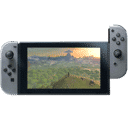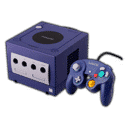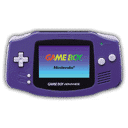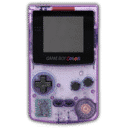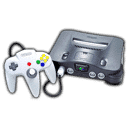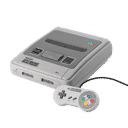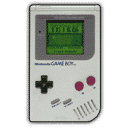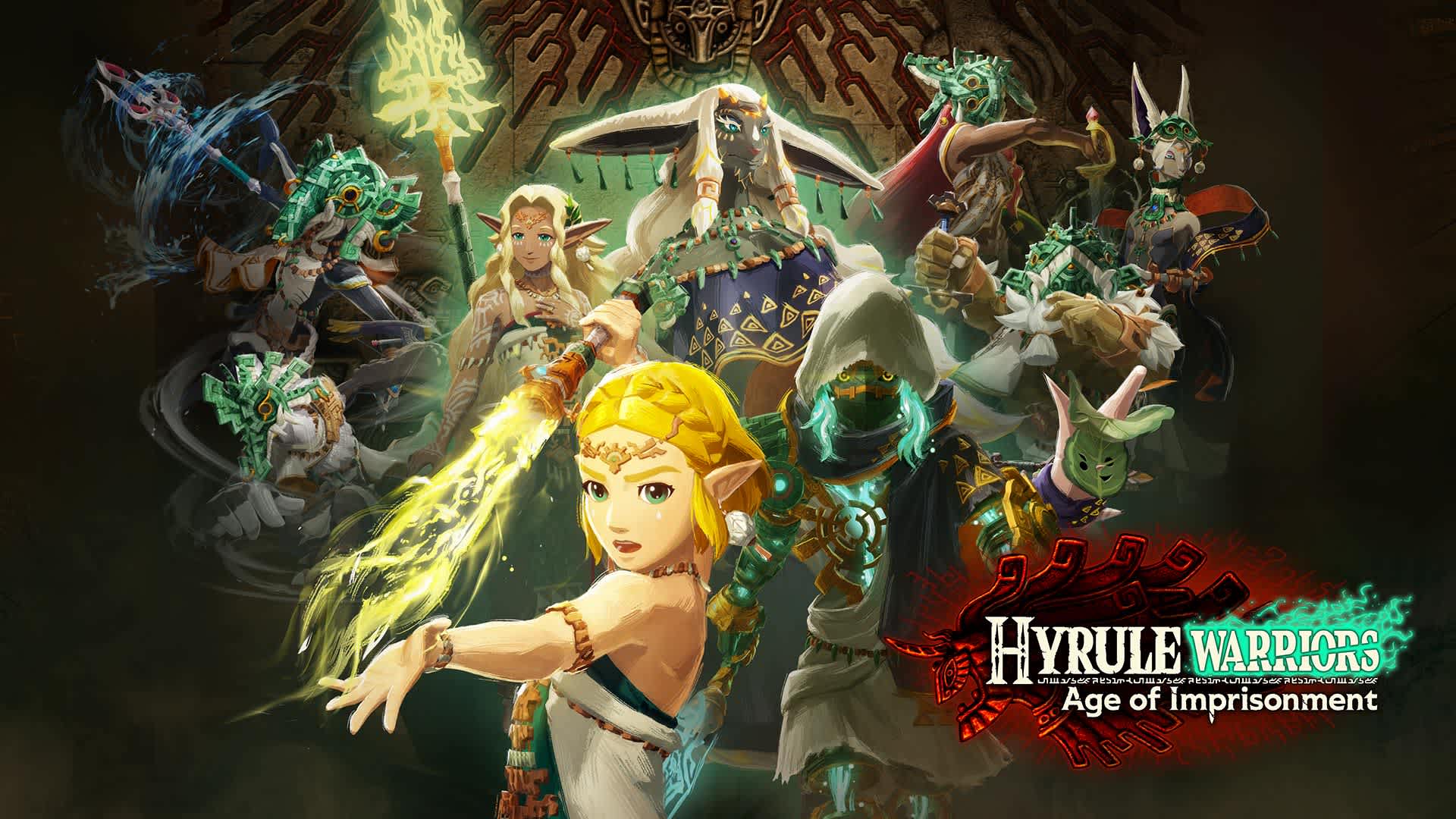
Summary:
Hyrule Warriors: Age of Imprisonment arrives with a day-one update that does exactly what players want on launch week: it removes progress-blocking bugs, stabilizes co-op, and adds a small but meaningful tool that speeds up the loop between missions. Version 1.0.1 addresses four headline issues that surfaced during pre-release testing and early access periods: a Korok discovery edge case that could stall progress in specific conditions during two-player split-screen, a dark screen freeze tied to quitting mid-animation on “Temporal Counter,” a GameShare communication quit that sometimes blocked battle start, and several catch-all fixes aimed at smoothing out minor hitches. On top of that, there’s a new Y-button shortcut on the map that jumps straight into Aside Quests, making route planning snappier when you’re cleaning up objectives or optimizing materials. If you’re returning today, expect fewer interruptions, cleaner hand-offs between modes, and a navigation tweak that cuts down on clicks. Below, we break down each change, how it shows up in play, and a few quick checks to make sure your system is actually running 1.0.1 before you head back onto the field.
Hyrule Warriors: Age of Imprisonment Version 1.0.1
Launch days are exciting, but they’re also where small cracks show up under real-world pressure. Version 1.0.1 lands alongside Hyrule Warriors: Age of Imprisonment to steady that opening stretch. The focus isn’t flashy new content; it’s reliability. The patch shores up progression stoppers that could sour first impressions, especially for players jumping straight into split-screen or experimenting with GameShare. Most importantly, it removes a Korok interaction edge case and a timing-sensitive crash around “Temporal Counter,” two things that could halt momentum. The added shortcut to Aside Quests might sound minor, but it trims repetitive menuing across dozens of session transitions. When you’re clearing objectives, fusing gear, and chasing materials, saving a handful of clicks every loop adds up. That’s why 1.0.1 matters: it tightens the loop, stabilizes co-op, and respects your time on day one.
Quick summary of the biggest fixes at a glance
Here’s the short version before we dig in: progress could stop if a Korok was discovered under very specific conditions during two-player split-screen; that’s fixed. Quitting a battle while the “Temporal Counter” animation was playing could darken the screen and block progression; that’s fixed, too. GameShare sessions occasionally failed to start a battle after quitting communication; that’s resolved. Beyond those headline items, there are several smaller cleanups bundled into “other issues” that lift general stability. Finally, there’s a new Y-button shortcut to jump directly into Aside Quests from the map, which streamlines cleanup runs and farming routes. If you only have a few minutes to play, these changes reduce friction so you spend more time busting through enemy lines and less time wrestling menus or reloading sessions.
The Korok progress stopper: what happened and how it’s fixed
Korok discoveries are tiny wins sprinkled across the map, but in split-screen they introduced an odd edge case: under certain conditions, finding a Korok could stall progress. Think of it as two timing signals stepping on each other—player discovery and UI state—while the system also tracked co-op presence. The patch refactors that handshake so co-op state changes don’t lock progression when a Korok event fires. In play terms, if you like sweeping zones for collectibles with a partner, you can resume that habit with confidence. It also means fewer “reload from checkpoint” moments that break momentum during a good run. The fix won’t change how Koroks appear or reward you; it just ensures the discovery animation and save flag resolve cleanly in split-screen without blocking your next objective or the mission’s completion screen.
Split-screen darkness bug: symptom, cause, and resolution
Another frustration was a sudden dark screen that could appear after quitting mid-animation on “Temporal Counter,” leaving the session unable to progress. While the effect looked like a display or HDR issue, it was really a state transition problem: the game attempted to fade and free assets while a special-move animation pipeline was still active. Version 1.0.1 cleans up that sequencing. Now, if you bail during that window, the game gracefully unwinds the animation, restores rendering layers, and returns you to stable UI without a soft-lock. Practically, this saves you from losing a long mission because you exited at the wrong microsecond. It’s the kind of small fix you may never notice—until the day it saves a thirty-minute run and keeps your evening gaming plans intact.
Temporal Counter quit crash: why the screen went black
“Temporal Counter” is flashy, and like any effect that bends time, it juggles camera control, motion blur, and enemy AI states. Quitting while those systems were in flux could leave the renderer in a half-transition, which presented as a dark screen and locked input. The new build adds guardrails: it blocks the quit command during the critical few frames where the animation finalizes, and it adds a cleanup routine that restores camera and UI even if you somehow manage to quit at the exact wrong moment. For you, this means you can play aggressively with counters again and not worry about a black screen ruining a sequence. It also hints at a broader stability sweep across cinematic moves, which should float all boats for similar skills and boss-triggered cut-ins throughout the campaign.
GameShare battle start issue: what to expect after the patch
GameShare is excellent for quick co-op nights, but communication drops could create a scenario where a battle refused to start after quitting the link. That’s fixed in 1.0.1 by resetting session tokens and matchmaking flags when you return to the staging layer. In regular language: if your friend’s connection hiccups or you decide to switch hosts, you won’t get stuck in a “ready but can’t go” limbo. To make the most of it, re-enter the lobby after any disconnect and you should see normal matchmaking prompts. This is a quality-of-life boost for groups who rotate party members, test loadouts, and hop between missions. It also reduces the number of full application restarts that were sometimes used as a workaround, so you spend more time swinging blades and less time troubleshooting.
Quality-of-life shortcut on the map: how the Y button helps
The new Y-button shortcut to Aside Quests is small, fast, and strangely satisfying. Previously, getting to those optional objectives meant diving through a couple of layers, then hopping back out to re-route. Now, from the map, you press Y and jump right into the list, tick off what you need, and return to planning in seconds. It’s especially handy after long missions when you’re juggling materials, checking fusion opportunities, or setting temporary goals like “unlock that Rauru skill” or “farm zonai charges.” Over an evening, those saved seconds add up to extra attempts, more materials, and a smoother mental flow. It also encourages players to engage more often with side content because the friction to check or accept tasks is lower. In a musou where momentum rules, a crisp shortcut keeps the tempo up.
Performance, stability, and smaller tweaks worth noting
Not every improvement earns a headline, but “several other issues have been fixed” does real work behind the scenes. Expect fewer micro-stutters when swapping characters in crowded arenas, cleaner transitions out of cut-ins, and more consistent audio cues after big crowd-control moves. If you play docked, camera pans should feel steadier during large explosions or particle-heavy counters, and in handheld the UI should retain its snap even when enemy counts spike. None of this rewrites the experience, but you’ll notice the absence of small annoyances that used to nudge you toward a restart. The patch also tightens error handling in network hand-offs, which quietly benefits both GameShare and standard online features. It’s the invisible polish that makes the second hour of a session feel as smooth as the first.
How to update on Switch 2 and verify the version number
Updating is straightforward. With your Switch 2 online, highlight the game on the Home menu, press the Options button, and choose “Software Update” to pull the latest build. Once installed, check the version on the title screen or the Options > Information page to confirm “Ver. 1.0.1.” If you don’t see it, restart the console and try again; sometimes caches delay the prompt right after launch. Players using physical copies should also make sure the day-one patch installs before starting a new save, especially if co-op is on the schedule tonight. If you’re planning split-screen, confirm both controllers are updated and paired cleanly; controller firmware updates can affect wake behavior and input prompts, which is easy to mistake for a game issue during setup.
Tips before jumping back in: co-op checks, saves, and routing
A quick pre-mission checklist keeps the evening smooth: confirm you’re on 1.0.1, test split-screen with a short skirmish, and do a map pass using the new Y-shortcut to clear any low-hanging Aside Quests. If you’re trophy or achievement-minded, earmark Korok routes for co-op now that the discovery stall is gone, and mark any materials you’ve been putting off farming. For GameShare nights, decide who’s hosting and stick to it for a few missions to minimize reconnects while everyone settles. Back up saves to local slots as needed, and if you’re experimenting with new builds, tag a couple of easy missions to validate your flow before pushing into harder late-game scenarios. These little steps help you feel the benefits of the patch immediately instead of noticing them only when something would have gone wrong.
Why the Korok and Temporal Counter fixes boost pacing
Musou games thrive on rhythm—attack, dash, capture, repeat—and nothing breaks that rhythm like a progress halt or a fade-to-black dead end. The Korok and Temporal Counter fixes remove two classic rhythm killers: a collectible event colliding with co-op state, and a cinematic move interrupting a quit mid-animation. Without those roadblocks, your route planning sticks, your clears roll into the next skirmish, and your co-op sessions avoid the “well, guess we restart” lull. The result is subtle but powerful: more minutes spent in flow, fewer breakpoints that reset your momentum, and a cleaner sense of forward motion during long play windows. It’s the difference between a night of “one more mission” and a night cut short by a mood-breaking glitch.
How the new map shortcut changes farming and cleanup
Aside Quests are the connective tissue between big story beats. The Y-button shortcut nudges them closer to the main artery by reducing the steps to engage. If you’re chasing specific materials or unlocking a character’s node, you’ll bounce between the map and these tasks constantly; the shortcut lowers the overhead of that bounce. It also helps newer players build good habits, checking rewards and prerequisites more often because the friction is lower. Over time, that means tighter builds, smarter resource allocation, and faster unlocks. Veterans will love it during late-game cleanup, where repeating routes with small variations becomes the meta. Being able to pop open the list, queue tasks, and jump back saves more time than it sounds like on paper—and you feel the difference every 10–15 minutes.
Co-op reliability after 1.0.1: what we’ve seen
Co-op is the soul of a Hyrule Warriors session for many of us, and early reports line up with what the notes promise: fewer stalls, steadier transitions, and less menu purgatory after disconnects. Split-screen no longer risks a hard stop on Korok finds, and the Temporal Counter fix means fewer black-screen recoveries. GameShare, the trickiest feature because it depends on two systems, benefits from better session resets after someone quits communication. You’ll still want solid connections and consistent hosts, but the difference between “we’re stuck” and “back to the lobby in five seconds” is night and day. If you took a break after a rough early session, 1.0.1 is a good reason to give co-op another go.
Small experiential wins you’ll notice tonight
Sometimes the best patches aren’t flashy—they just make everything feel a bit easier. Expect fewer odd hitches when swapping leaders during crowded set-pieces, better UI responsiveness after big counters, and a cleaner feel to camera cuts when bosses enter. The new shortcut also makes the map feel more like a command center than a menu you endure. If you’re task-oriented, you’ll likely spend more time plotting and less time digging. And if you’re the designated planner in your group, shaving seconds from each loop adds up to an extra mission or two before bedtime. It’s the soft kind of progress you notice when you step away for a week and come back wondering why everything clicks faster.
What this patch signals about post-launch support
Day-one patches say a lot about priorities. Version 1.0.1 focuses on flow and co-op stability, which tracks with a game built around big, replayable battles. It also acknowledges how many players jump straight into split-screen or GameShare at launch. The added shortcut suggests the team is watching for friction points in the meta layer, not just combat balance. Taken together, it’s a statement that polishing the loop—and removing blockers that chip away at excitement—is the north star. If future updates continue this trend, we can expect more quality-of-life tweaks, targeted bug hunts around cinematic skills, and periodic stability passes that keep the experience feeling crisp as the player base grows and strategies evolve.
Looking ahead: features and fixes we’ll keep an eye on
With the big stoppers addressed, the next frontier is convenience and clarity. Loadout previews from the map, granular filters for Aside Quests, and clearer indicators for co-op roles would each shave a little friction. Balance-wise, watching how counters chain in late-game and whether certain leaders overperform in crowded arenas will guide future tuning. Network-wise, continued refinements to GameShare hand-offs will pay dividends as more players adopt it for casual nights. For now, the important thing is simple: 1.0.1 gets you back to battling with fewer interruptions, a smarter map, and a tighter rhythm. That’s a rock-solid place to start a long post-launch life.
Conclusion
Version 1.0.1 is the kind of day-one patch that respects your time. It removes two momentum-killing bugs, stabilizes online hand-offs, and drops in a shortcut that makes the map feel built for the way we actually play. If you bounced off co-op because of an early snag—or if you love efficient cleanup runs—the update is worth grabbing before your next session. Confirm the version number, try the Y-button flow on the map, and enjoy a launch week that’s smoother, quicker, and better aligned with how we blaze through Hyrule’s battlefields.
FAQs
- What does Version 1.0.1 fix exactly? — It resolves a Korok discovery stall in two-player split-screen, prevents a dark screen and progression block when quitting during the “Temporal Counter” animation, fixes a battle start issue after quitting GameShare communication, and includes several smaller stability improvements. It also adds a Y-button shortcut to Aside Quests on the map.
- How do I install the update on Switch 2? — From the Home menu, highlight the game, open Options, and select “Software Update.” After installation, verify the build shows “Ver. 1.0.1” on the information screen or title screen before starting a new session.
- What is the new map shortcut and why should I use it? — Pressing Y on the map now jumps straight to Aside Quests. It saves clicks when planning routes, checking rewards, or cleaning up tasks, which adds up over long sessions.
- Did the patch change combat balance? — No balance changes are listed in these notes. The focus is stability and flow—fixing progress stoppers and improving session hand-offs—so your builds and combat feel should remain familiar.
- Is GameShare more reliable after 1.0.1? — Yes. Session tokens and flags are reset more cleanly after quitting communication, reducing cases where battles wouldn’t start. It won’t fix a bad connection, but it makes recoveries faster and smoother.
Sources
- Hyrule Warriors: Age Of Imprisonment Receives Its First Switch 2 Update (Version 1.0.1), Nintendo Life, November 6, 2025
- Hyrule Warriors: Age of Imprisonment Update 1.0.1 Patch Notes, Nintendo Insider, November 6, 2025
- How to Update Hyrule Warriors: Age of Imprisonment, Nintendo Support, November 5, 2025
- Hyrule Warriors: Age of Imprisonment day one patch notes revealed, RPG Site, November 5, 2025
- Hyrule Warriors: Age of Imprisonment Update Ver. 1.0.1 Fixes Bugs and Adds Map Shortcut, Twisted Voxel, November 5, 2025
- Hyrule Warriors: Age of Imprisonment, Nintendo (NL), November 6, 2025
- Nintendo brengt Zelda-game Hyrule Warriors: Age of Imprisonment uit op Switch 2, Tweakers, November 6, 2025
- Hyrule Warriors: Age of Imprisonment gets November 2025 release date, GamesRadar+, October 2025
- Hyrule Warriors: Age of Imprisonment finishes what Tears of the Kingdom started, The Verge, November 2025
- Hyrule Warriors: Age of Imprisonment kopen voor de Switch 2, Budgetgaming, November 6, 2025


